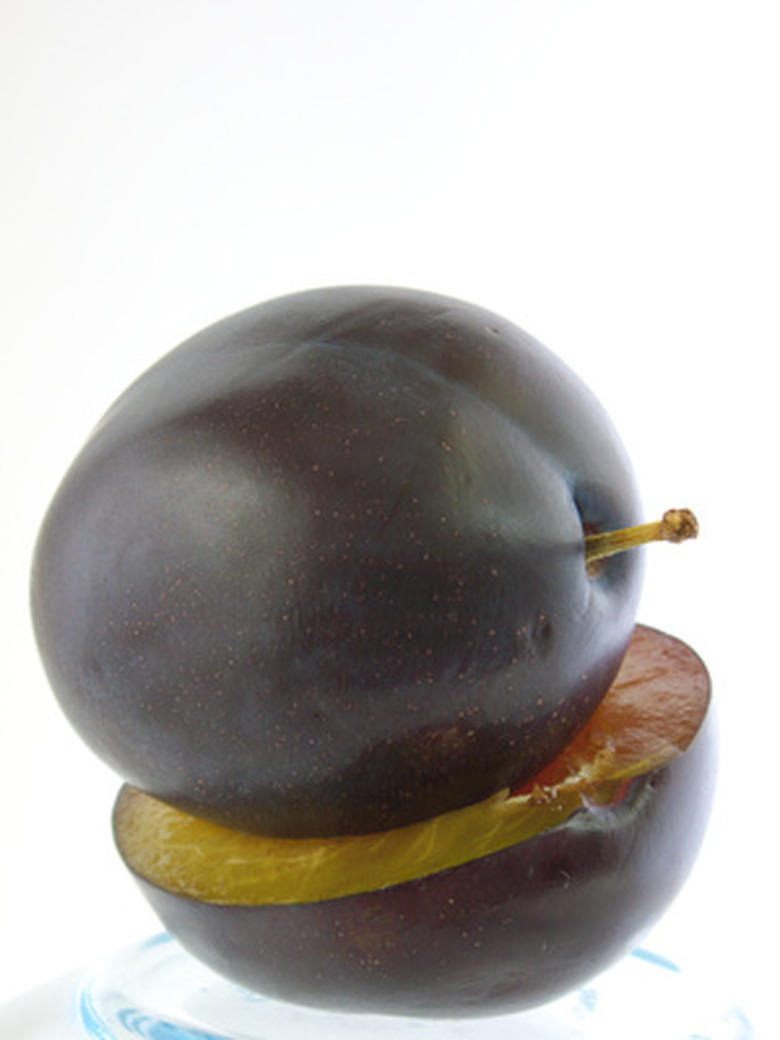Santa Rosa Plum Tree Information
Santa Rosa plums remain an old-time favorite with sweet, juicy red flesh perfect for eating off the tree or for canning and baking. The trees put forth beautiful fragrant blooms, adding to the garden's beauty in early spring. In late fall, the large fruits are ready for harvesting, making all the work of growing Santa Rosa plums well worth the effort.
History
The history of plums dates back to the Roman Empire when more than 300 varieties were grown. Modern cultivars from these early plum trees are called European plums. The other type of plum, the Japanese plum, originated in China before being brought to Japan in the 1600s. The plums became very popular in Japan, where they became an important part of the culture. In the late 1800s, Japanese plums were introduced in the United States, with the Santa Rosa plum cultivar becoming a big favorite.
- Santa Rosa plums remain an old-time favorite with sweet, juicy red flesh perfect for eating off the tree or for canning and baking.
- In the late 1800s, Japanese plums were introduced in the United States, with the Santa Rosa plum cultivar becoming a big favorite.
Description
Growing up to 12 feet in height as well as width, these plum trees thrive in USDA hardiness zones 5 to 9, where danger of frost is minimal. This popular tree features fragrant white blossoms in late May. In the third to fifth year, the tree produces fruits that mature into large, deep red plums with yellow flesh ready for harvest in late July or early August.
Planting and Fertilization
Santa Rosa plums trees thrive if planted in well-drained soil in full sun. Most Japanese plums require another tree with which to pollinate and set fruit. While Santa Rosa will self-pollinate to a certain degree, more fruit appears on the tree if it pollinates with another suitable plum tree. Newly planted plum trees require light fertilization during the first year with fertilizer applied during late winter, after fruiting and at the end of summer in following years. Regular watering also helps the tree become well-established.
- Growing up to 12 feet in height as well as width, these plum trees thrive in USDA hardiness zones 5 to 9, where danger of frost is minimal.
- While Santa Rosa will self-pollinate to a certain degree, more fruit appears on the tree if it pollinates with another suitable plum tree.
Uses
Nothing beats the fresh, juicy taste of a Santa Rosa plum plucked and eaten right off tree. These plums also work well when made into jams, jellies and preserves, as well as puddings and sauces. The plums also work well in desserts such as crisps, crumbles and other baked goods.
Diseases and Pests
As an older cultivar, Santa Rosa plums remain susceptible to plum leaf scald. This disease occurs when bacteria is introduced to the plant by leafhoppers, a plant-feeding insect that thrives on wild plum trees. One way to avoid the disease is to remove any wild plum trees located within several hundred yards of the Santa Rosa plum about to be planted. Deer and rabbits also cause problems by eating the bark from the tree, with deer also breaking branches. The use of deer fences and rabbit guards offers a way to deal with this problem.
- Nothing beats the fresh, juicy taste of a Santa Rosa plum plucked and eaten right off tree.
- As an older cultivar, Santa Rosa plums remain susceptible to plum leaf scald.
